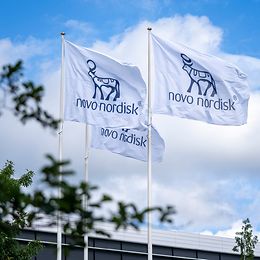在此处更改您的语言和 LGT 位置。
私人客户的数字平台
登入 LGT 智能银行
金融中介机构的数字平台
登入 LGT 智能银行 Pro
常见问题解答 (FAQ)
LGT 智能银行帮助
常见问题解答 (FAQ)
LGT 智能银行专业版帮助
Weight-loss drugs are reducing the risk of obesity-related diseases like diabetes, stroke and hypertension, which is excellent news for patients. But how will this affect the pharma industry's sales of treatments for these conditions?

Since the discovery of penicillin and the development of the contraceptive pill, few new drugs have attracted as much attention as weight-loss injections. This isn't surprising. The World Health Organisation reports that more people die these days from the consequences of obesity than from hunger.

The manufacturers of today's most popular weight-loss injections, Novo Nordisk and Eli Lilly, have created unprecedented demand for their products, with the result that the share prices of both companies have multiplied in recent years. Even though long-term side effects cannot be ruled out and the drugs must be taken over the long term, demand cannot currently be met. Novo Nordisk has even become Europe's most valuable company, with a market capitalisation of around 600 billion USD.
Obesity is one of the most common diseases of modern life. Globally, by 2035, almost 54 % of adults (3.3 billion) could be obese or very overweight, compared with (42 %) 2.2 billion in 2020. The percentage of young people aged five to 19 who are obese or very overweight is expected to rise from 22 % (430 million) to over 39 % (770 million) by 2035.
Why does this matter? Because obesity is a major risk factor for chronic diseases like diabetes, coronary heart disease, stroke, and several cancers, which are all among the top causes of death worldwide.

The aging of the population is a key driver of current and future demand for new high blood pressure medicines, stroke therapies, and innovative cancer treatments; pharmaceutical companies are devoting significant R&D funding to this.
The commercial attractiveness of these markets is unquestionable. Current estimates suggest that the oncology market alone will grow at an average annual rate of 8.9 % from 240 billion USD in 2024, to around 520 billion USD in 2033.
So, we expect the pharmaceutical sector to remain attractive for investors. Exposure to the obesity segment is not mandatory. High margins, stable cash flows, and high dividend yields should remain the sector's key characteristics. Comparison of the relationship of the profitability of a company in the pharma sector with those of the broader market show attractive valuations. This applies in both Europe and the USA.
All that said, investors should not overlook the obesity segment. Although the current offerings have been wildly successful and the future looks bright, this market is already becoming more complex.

Given that obesity is so significant for diabetes, cardiovascular disease, and various cancers, could the new weight-loss medicines lead to a sustainable fall in demand for drugs to treat these often-terrible diseases? This is a difficult question to answer. To illustrate the point, let's look at the interaction between weight-loss drugs and insulin.
It is reasonable to assume that the demand for type 2 diabetes drugs and insulin, in particular, will decline as a result of the increasing market penetration of new weight-loss drugs, some of which are also approved to treat type 2 diabetes.
Since several major weight-loss drug makers also produce insulin, these firms should be able to compensate for the decline in insulin sales. Although given that an aggressive price war has been raging in the insulin market for years, this has long been a less attractive market than that of slimming injections.

According to the WHO, among non-communicable diseases, type 2 diabetes is the sixth largest cause of mortality worldwide However, type 2 diabetes is spreading rapidly in many poorer countries, where treatment with weight-loss injections is unaffordable for most people. This alone should continue to support insulin sales growth in the short term.
The size of the global insulin market was around 28 billion USD in 2023, and is expected to exceed 42 billion USD by 2033, with demand shifting from wealthier to poorer countries. So, although we do not expect an enormous drop in insulin prices, over the longer term we do anticipate a fall in demand.
Weight-loss drugs are a focus of many large pharma companies. And it's no wonder. Even with supply bottlenecks, global spending on obesity drugs totalled 24 billion USD last year and could rise to 131 billion USD by 2028. This figure may be an underestimate.
Obesity drugs are and will continue to be a highlight of the pharma sector, but this will not stop the development of treatments for other classic common diseases. While following the obesity saga makes sense for investors, it would be a mistake to overlook promising developments in other, perhaps less starry areas of pharma research and development. Of course, all investments carry some risk. On average, only one in ten clinically tested drugs reaches the market. With this in mind, we see advantages for companies that have a certain breadth in their development portfolio.